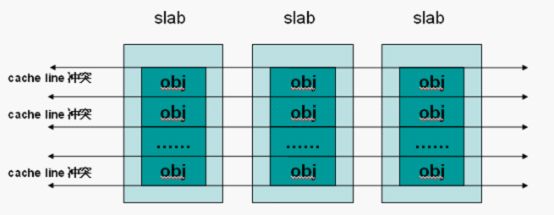- 吴恩达机器学习笔记复盘(二)监督学习和无监督学习
wgc2k
机器学习机器学习笔记学习
监督学习经济价值以及定义监督学习是机器学习中创造了99%经济价值的类型,它是学习输入到输出映射的算法,关键在于给学习算法提供包含正确答案(即给定输入X的正确标签Y)的学习例子。生活中的例子邮件分类,输入是电子邮件,输出是判断邮件是否为垃圾邮件。语音识别,输入音频剪辑,输出文本记录。机器翻译,输入一种语言文本,输出其他语言的相应翻译。在线广告,输入广告和用户信息,预测用户是否点击广告,为公司带来大量
- uCOS-II学习笔记(一)
abc94
uCOS-II任务dosborlandos编译器数据结构
第一章:范例在这一章里将提供三个范例来说明如何使用µC/OS-II。这一章是为了让读者尽快开始使用µC/OS-II。1.00安装µC/OS-II1.01INCLUDES.H#include"includes.h"INCLUDE.H可以使用户不必在工程项目中每个*.C文件中都考虑需要什么样的头文件。换句话说,INCLUDE.H是主头文件。这样做唯一的缺点是INCLUDES.H中许多头文件在一些*.C
- C语言数据结构——变长数组(柔性数组)
Iawfy22
数据结构c语言柔性数组
前言这是一位即将大二的大学生(卷狗)在暑假预习数据结构时的一些学习笔记,供大家参考学习。水平有限,如有错误,还望多多指正。本文主要介绍了如何手动实现一个变长数组,以及实现其部分功能(如删除、查找、添加、排序等)变长数组介绍变长数组又可以叫柔性数组,与一般数组不同,它是一个动态的数组,具体表现为可以根据数组里面元素个数的多少而自动的进行扩容,以便达到变长(柔性)的特点。预备知识为了实现自动边长扩容这
- C语言学习笔记-进阶(17)预处理详解
John.Lewis
c语言学习笔记
1.预定义符号C语言设置了一些预定义符号,可以直接使用,预定义符号也是在预处理期间处理的。__FILE__//进⾏编译的源⽂件__LINE__//⽂件当前的⾏号__DATE__//⽂件被编译的⽇期__TIME__//⽂件被编译的时间__STDC__//如果编译器遵循ANSIC,其值为1,否则未定义举个例子:printf("file:%sline:%d\n",__FILE__,__LINE__);2
- 图神经网络学习笔记—高级小批量处理(专题十四)
AI专题精讲
图神经网络入门到精通人工智能
小批量(mini-batch)的创建对于让深度学习模型的训练扩展到海量数据至关重要。与逐条处理样本不同,小批量将一组样本组合成一个统一的表示形式,从而可以高效地并行处理。在图像或语言领域,这一过程通常通过将每个样本缩放或填充为相同大小的形状来实现,然后将样本在一个额外的维度中分组。该维度的长度等于小批量中分组的样本数量,通常称为batch_size。由于图是能够容纳任意数量节点或边的最通用的数据结
- 简单了解WIndow和Linux的路径含义
alive903
Linuxlinuxwindows
目录1>路径概念2>绝对路径2.1>window绝对路径2.2>Linux绝对路径3>相对路径3.1>window相对路径3.2>Linux相对路径很高兴你能看到这篇文章,同时我的语雀文档也更新了许多嵌入式系列的学习笔记希望能帮到你:https://www.yuque.com/alive-m4b9n1>路径概念路径是用来描述一个文件或目录在文件系统中的位置的方式。路径可以是文件系统中的唯一标识符,
- 嵌入式面试真题——Linux内核空间与用户空间
70000cc
嵌入式面试真题linuxc语言嵌入式硬件面试单片机
本文以32位系统为例介绍内核空间(kernelspace)和用户空间(userspace)。对32位操作系统而言,它的寻址空间(虚拟地址空间,或叫线性地址空间)为4G(2的32次方)。也就是说一个进程的最大地址空间为4G。操作系统的核心是内核(kernel),它独立于普通的应用程序,可以访问受保护的内存空间,也有访问底层硬件设备的所有权限。为了保证内核的安全,现在的操作系统一般都强制用户进程不能直
- WPF学习笔记04-控件Control_Part1
一只只对技术感兴趣的程序员
WPF学习wpf学习ui
之前我们已经学习过WPF布局了,这节我们开始简单介绍下控件。熟悉Winform的应该对控件并不陌生。WPF和Winform的渲染也是不一样的一个是基于DirectX一个是基于GDI+。在WPF中,打交道最多的控件无非就那么几种。1)布局控件。之前介绍过的,可以容纳多个控件或嵌套其他布局控件,用于在UI上组织和排列控件。比如StackPanel、Grid等控件都属于此类控件,他们都拥有共同父类---
- Linux内核课程学习心得
萝卜cherish
linux内核分析linux内核学习总结
罗晓波+原创作品转载请注明出处+《Linux内核分析》MOOC课程http://mooc.study.163.com/course/USTC-1000029000不知不觉,八周课程一晃而过,回想起当初选择这门课到学习完最后一个课件,也是一个习惯的养成了,到现在我倒是习惯性地在周五和周日上一下课程主页,不过在这八周的线上课程学习中,我还是有所收获的,下面把我的一点小感想分享一下吧。课程第一周,通过一
- 【学习笔记】GitLab 使用技巧和说明和配置和使用方法
铜锣烧1号
pythongitgitlabpycharm
GitLab使用技巧和说明1.注册账号和登录注册账号:访问GitLab官网,点击“Signup”按钮,填写必要的信息(如用户名、邮箱、密码)完成注册。普通用户注册后需要管理员审批,如果有管理员权限可以直接登录使用。登录:使用注册的账号和密码登录GitLab。2.创建项目创建项目:登录后,点击页面右上角的加号图标,选择“Newproject”创建新项目。在项目创建页面,填写项目名称、描述和可见性等信
- 『FFmpeg学习笔记』MAC系统电脑安装FFmpeg以及使用
AI大模型前沿研究
大模型笔记macosffmpegM1
MAC系统电脑安装FFmpeg文章目录一.安装FFmpeg1.1.MACbrew安装FFmpeg1.2.MAC官网下载FFmpeg压缩包1.3.Windows安装1.4.Linux安装二.FFmpeg的使用2.1.音频操作2.1.1.如果不转换,直接输出aac2.1.2.将音频输出为wav2.1.3.将aac转换为wav2.1.4.双声道分离2.1.5.使用FFmpeg将音频和视频合并2.2.字幕
- 渗透学习笔记(四)window基础2
nnnimok
学习笔记
声明!学习视频来自B站up主**泷羽sec**有兴趣的师傅可以关注一下,如涉及侵权马上删除文章,笔记只是方便各位师傅的学习和探讨,文章所提到的网站以及内容,只做学习交流,其他均与本人以及泷羽sec团队无关,切勿触碰法律底线,否则后果自负!!!!有兴趣的小伙伴可以点击下面连接进入b站主页[B站泷羽sec](https://space.bilibili.com/350329294)五、Windows网
- C++ 并发编程实战 学习笔记
myc13381
c++笔记
C++并发编程学习笔记目录一.基本接口二.初步了解多线程三.线程所属权管理四.线程间共享数据五.同步并发操作六.C++内存模型和原子类型操作七.基于锁的并发数据结构设计八.无锁数据结构九.并发代码设计十.高级线程管理十一.并行算法十二.参考资料基本接口std::thread常用成员函数构造和析构函数//默认构造函数,创建一个线程,什么也不做thread()noexcept;//初始化构造函数,创建
- RecyclerView学习笔记(1) ChildHelper.Bucket
奋斗小小鸟cy
Androidandroid数据结构
简介toString方法set方法get方法clear方法countOnesBefore方法reset方法insert方法remove方法总结简介RecyclerView中的ChildHelper.Bucket是一个工具类,实现了类似List的数据结构,从而达到减少内存占用的目的。Bucket是一个链表结构,有两个字段:mData用于存储当前信息,next指向下一个数据publicstaticcl
- Linux内核地址空间布局详解
Linux加油站
linux网络
1.简介虽然x86_64的物理地址范围为64bit,但是因为地址空间太大目前不可能完全用完,当前支持57bit和48bit两种虚拟地址模式。地址模式单个空间用户地址空间内核地址空间32位2G0x00000000-0x7FFFFFFF0x80000000-0xFFFFFFFF64位(48bit)128T0x0000000000000000-0x00007FFFFFFFFFFF0xFFFF800000
- RxSwift 学习笔记第二篇之Observables
我叫柱子哥
#RxSwiftrxswiftObservableSwift
目录前言一、什么是Observables二、创建Observable的几种方式1.just1.含义2.实用场景2.of1.含义3.from4.create5.interval三、订阅Observable四、取消订阅(DisposeBag)五、常见操作符六、总结前言这篇博客主要介绍Observables的用法。一、什么是ObservablesObservables是Rx的核心。在Rx中我们看到“Ob
- React学习笔记16
充气大锤
React学习笔记react.js学习笔记javascript前端vue.js
一、useReducer作用:和useState的作用类似,用来管理相对复杂的状态数据使用:1、定义一个reducer函数(根据不同的action返回不同的新状态)2、在组件中调用useReducer,并传入reducer函数的状态和初始值import{useReducer}from"react"functionreducer(state,action){switch(action.type){c
- Linux内核——遍历 net_device 结构
唯独不开心
linux内核代码学习net_device
linux内核版本:2.6.32dev_base_head,dev_list)#definefor_each_netdev_reverse(net,d)\list_for_each_entry_reverse(d,&(net)->dev_base_head,dev_list)#definefor_each_netdev_rcu(net,d)\list_for_each_entry_rcu(d,&(
- C语言 进阶指针学习笔记
flashier
C语言学习记录c语言学习笔记
文章目录字符指针指针数组数组指针数组名数组传参函数指针函数指针数组指向函数指针数组的指针回调函数Qsort的使用通过冒泡排序模拟实现qsort大部分的内容都写在代码注释中指针有类型,指针的类型决定了指针的±整数的步长,指针解引用操作的时候的权限字符指针#includeintmain(void){constchar*str1="Hello,World!";constchar*str2="Hello,
- Python个人学习笔记(14):函数(匿名函数、内置函数(下)、三元表达式)
NEET_LH
樵夫老师Python零基础课程个人学习笔记python学习笔记
九、匿名函数lambda表达式语法规则:变量=lambda参数1,参数2,…:返回值例:用lambda简化下述操作deffunc(a,b):returna+bret=func(1,2)print(ret)代码:fn=lambdaa,b:a+bprint(fn)print(fn(12,13))结果:at0x000001E751EAAF20>25可以帮我们一句话创建函数可以与某些内置函数一起用十、内置
- Python爬虫学习笔记_DAY_26_Python爬虫之requests库的安装与基本使用【Python爬虫】_requests库ip
苹果Android开发组
程序员python爬虫学习
最后Python崛起并且风靡,因为优点多、应用领域广、被大牛们认可。学习Python门槛很低,但它的晋级路线很多,通过它你能进入机器学习、数据挖掘、大数据,CS等更加高级的领域。Python可以做网络应用,可以做科学计算,数据分析,可以做网络爬虫,可以做机器学习、自然语言处理、可以写游戏、可以做桌面应用…Python可以做的很多,你需要学好基础,再选择明确的方向。这里给大家分享一份全套的Pytho
- LVGL的学习笔记第一章
期待的是什么
LVGL学习
1.屏幕对象的创建过程lv_init_lv_ll_init(&LV_GC_ROOT(_lv_disp_ll),sizeof(lv_disp_t));//注册初始化显示器链表lv_disp_drv_register_lv_ll_ins_head(&LV_GC_ROOT(_lv_disp_ll));//注册显示器到链表disp->act_src=lv_obj_create(NULL);//在显示器上创
- 嵌入式学习笔记:LVGL v8 的按钮控件使用方法
WangWEel
学习笔记microsoft嵌入式
嵌入式学习笔记:LVGLv8的按钮控件使用方法LVGL(LightandVersatileGraphicsLibrary)是一个开源的嵌入式图形库,提供了丰富的图形控件和界面设计工具,适用于各种嵌入式系统。本文将介绍LVGLv8版本中按钮控件的使用方法,并提供相应的源代码示例。LVGLv8中的按钮控件是常用的用户交互界面元素之一,它可以用于触摸屏或其他输入设备上,让用户能够与嵌入式系统进行交互。下
- LVGL v8学习笔记 | 字体的应用技巧 嵌入式
CodeMaven
学习笔记前端嵌入式
LVGLv8学习笔记|字体的应用技巧嵌入式在嵌入式系统中,显示器的使用是非常普遍且重要的功能。而为了实现更灵活、美观的用户界面,字体的应用不可或缺。本文将介绍LVGLv8中字体的基本概念以及在嵌入式系统中使用字体的方法,并提供相应的源代码示例。一、字体的基本概念在LVGLv8中,字体是以像素点阵的形式存在的。每个字符由一系列像素点组成,这些像素点排列成矩阵,在显示器上渲染出相应的字符。字体可以分为
- 02_LVGL学习笔记:深理解样式(Style)机制与应用方法
电科周杰伦
嵌入式开发LVGLLVGL嵌入式开发UI设计
样式在LVGL中,样式(Style)是用来控制对象(控件)外观的核心机制,涵盖了颜色、边框、背景、文字、阴影、渐变、圆角等视觉特性。通过样式,你可以轻松地为不同状态(如正常、按下、禁用等)指定不同的外观效果。1.样式的基本概念1.1样式对象(lv_style_t)样式对象中包含若干可配置的视觉属性,例如背景色、边框宽度、文字颜色、阴影、圆角等。每个属性都可以通过相关的API(如lv_style_s
- ClickHouse 学习笔记
金州饿霸
BigData分布式数据库clickhouse学习笔记
1.连接到ClickHouse服务器clickhouse-client--host=10.16.226.100--user=default--password2.在ClickHouse中,如果你想要单独删除一行记录,且使用的是Distributed表引擎(或者其他不支持ALTERTABLEDELETE的引擎),你将无法直接通过删除操作来实现这一目标。ClickHouse是为大规模数据分析设计的,它
- Kotlin学习笔记之基础知识
mercyT
kotlin学习笔记
本内容是建立在有java的基础上去学习Kotlin的这门语言的,所以更多的是记录一些与java不同的之处,或者是Kotlin的特性等。基本类型在Kotlin中,所有东西都是对象,在这个意义上讲我们可以在任何变量上调用成员函数和属性。一些类型可以有特殊的内部表示——例如,数字、字符和布尔值可以在运行时表示为原生类型值,但是对于用户来说,它们看起来就像普通的类。在本节中,我们会描述Kotlin中使用的
- Kissat学习笔记
柯尼塞格475
IC设计c语言算法启发式算法
Kissat学习笔记前言SAT(BooleanSatisfiabilityProblem)是一个NP完全问题,在IC前端设计中,SAT验证是一个重要环节,它要求判定一个布尔公式是否存在一组变量赋值使其为真,于是在十几年间诞生了许多高效的SAT求解器。Kissat求解器曾在SAT竞赛中取得了优异成绩,作为CaDiCal求解器的继承者,Kissat在保持高性能的同时,通过优化内存和简化代码实现了更高的
- Python学习笔记
Helloooooworldddddd
python
eclipse中配置PyDev:Help-->InstallNewSoftware-->Add-->起名如:PyDev,网址:http://www.pydev.org/updates-->选择PyDev-->一路Next安装完之后创建新项目时,如果没有PyDev选项,则是安装的版本跟eclipse、jdk不匹配,需要卸载重新安装。卸载:Help-->AboutEclipse-->Installat
- python匿名函数的好处_python 匿名函数与三元运算学习笔记
weixin_39812142
python匿名函数的好处
匿名函数匿名函数就是不需要显示式的指定函数名首先看一行代码:defcalc(x,y):returnx*yprint(calc(2,3))#换成匿名函数calc=lambdax,y:x*yprint(calc(2,3))你也许会说,用上这个东西没感觉有毛方便呀,。。。。呵呵,如果是这么用,确实没毛线改进,不过匿名函数主要是和其它函数搭配使用的呢,如下res=map(lambdax:x**2,[1,2
- 强大的销售团队背后 竟然是大数据分析的身影
蓝儿唯美
数据分析
Mark Roberge是HubSpot的首席财务官,在招聘销售职位时使用了大量数据分析。但是科技并没有挤走直觉。
大家都知道数理学家实际上已经渗透到了各行各业。这些热衷数据的人们通过处理数据理解商业流程的各个方面,以重组弱点,增强优势。
Mark Roberge是美国HubSpot公司的首席财务官,HubSpot公司在构架集客营销现象方面出过一份力——因此他也是一位数理学家。他使用数据分析
- Haproxy+Keepalived高可用双机单活
bylijinnan
负载均衡keepalivedhaproxy高可用
我们的应用MyApp不支持集群,但要求双机单活(两台机器:master和slave):
1.正常情况下,只有master启动MyApp并提供服务
2.当master发生故障时,slave自动启动本机的MyApp,同时虚拟IP漂移至slave,保持对外提供服务的IP和端口不变
F5据说也能满足上面的需求,但F5的通常用法都是双机双活,单活的话还没研究过
服务器资源
10.7
- eclipse编辑器中文乱码问题解决
0624chenhong
eclipse乱码
使用Eclipse编辑文件经常出现中文乱码或者文件中有中文不能保存的问题,Eclipse提供了灵活的设置文件编码格式的选项,我们可以通过设置编码 格式解决乱码问题。在Eclipse可以从几个层面设置编码格式:Workspace、Project、Content Type、File
本文以Eclipse 3.3(英文)为例加以说明:
1. 设置Workspace的编码格式:
Windows-&g
- 基础篇--resources资源
不懂事的小屁孩
android
最近一直在做java开发,偶尔敲点android代码,突然发现有些基础给忘记了,今天用半天时间温顾一下resources的资源。
String.xml 字符串资源 涉及国际化问题
http://www.2cto.com/kf/201302/190394.html
string-array
- 接上篇补上window平台自动上传证书文件的批处理问卷
酷的飞上天空
window
@echo off
: host=服务器证书域名或ip,需要和部署时服务器的域名或ip一致 ou=公司名称, o=公司名称
set host=localhost
set ou=localhost
set o=localhost
set password=123456
set validity=3650
set salias=s
- 企业物联网大潮涌动:如何做好准备?
蓝儿唯美
企业
物联网的可能性也许是无限的。要找出架构师可以做好准备的领域然后利用日益连接的世界。
尽管物联网(IoT)还很新,企业架构师现在也应该为一个连接更加紧密的未来做好计划,而不是跟上闸门被打开后的集成挑战。“问题不在于物联网正在进入哪些领域,而是哪些地方物联网没有在企业推进,” Gartner研究总监Mike Walker说。
Gartner预测到2020年物联网设备安装量将达260亿,这些设备在全
- spring学习——数据库(mybatis持久化框架配置)
a-john
mybatis
Spring提供了一组数据访问框架,集成了多种数据访问技术。无论是JDBC,iBATIS(mybatis)还是Hibernate,Spring都能够帮助消除持久化代码中单调枯燥的数据访问逻辑。可以依赖Spring来处理底层的数据访问。
mybatis是一种Spring持久化框架,要使用mybatis,就要做好相应的配置:
1,配置数据源。有很多数据源可以选择,如:DBCP,JDBC,aliba
- Java静态代理、动态代理实例
aijuans
Java静态代理
采用Java代理模式,代理类通过调用委托类对象的方法,来提供特定的服务。委托类需要实现一个业务接口,代理类返回委托类的实例接口对象。
按照代理类的创建时期,可以分为:静态代理和动态代理。
所谓静态代理: 指程序员创建好代理类,编译时直接生成代理类的字节码文件。
所谓动态代理: 在程序运行时,通过反射机制动态生成代理类。
一、静态代理类实例:
1、Serivce.ja
- Struts1与Struts2的12点区别
asia007
Struts1与Struts2
1) 在Action实现类方面的对比:Struts 1要求Action类继承一个抽象基类;Struts 1的一个具体问题是使用抽象类编程而不是接口。Struts 2 Action类可以实现一个Action接口,也可以实现其他接口,使可选和定制的服务成为可能。Struts 2提供一个ActionSupport基类去实现常用的接口。即使Action接口不是必须实现的,只有一个包含execute方法的P
- 初学者要多看看帮助文档 不要用js来写Jquery的代码
百合不是茶
jqueryjs
解析json数据的时候需要将解析的数据写到文本框中, 出现了用js来写Jquery代码的问题;
1, JQuery的赋值 有问题
代码如下: data.username 表示的是: 网易
$("#use
- 经理怎么和员工搞好关系和信任
bijian1013
团队项目管理管理
产品经理应该有坚实的专业基础,这里的基础包括产品方向和产品策略的把握,包括设计,也包括对技术的理解和见识,对运营和市场的敏感,以及良好的沟通和协作能力。换言之,既然是产品经理,整个产品的方方面面都应该能摸得出门道。这也不懂那也不懂,如何让人信服?如何让自己懂?就是不断学习,不仅仅从书本中,更从平时和各种角色的沟通
- 如何为rich:tree不同类型节点设置右键菜单
sunjing
contextMenutreeRichfaces
组合使用target和targetSelector就可以啦,如下: <rich:tree id="ruleTree" value="#{treeAction.ruleTree}" var="node" nodeType="#{node.type}"
selectionChangeListener=&qu
- 【Redis二】Redis2.8.17搭建主从复制环境
bit1129
redis
开始使用Redis2.8.17
Redis第一篇在Redis2.4.5上搭建主从复制环境,对它的主从复制的工作机制,真正的惊呆了。不知道Redis2.8.17的主从复制机制是怎样的,Redis到了2.4.5这个版本,主从复制还做成那样,Impossible is nothing! 本篇把主从复制环境再搭一遍看看效果,这次在Unbuntu上用官方支持的版本。 Ubuntu上安装Red
- JSONObject转换JSON--将Date转换为指定格式
白糖_
JSONObject
项目中,经常会用JSONObject插件将JavaBean或List<JavaBean>转换为JSON格式的字符串,而JavaBean的属性有时候会有java.util.Date这个类型的时间对象,这时JSONObject默认会将Date属性转换成这样的格式:
{"nanos":0,"time":-27076233600000,
- JavaScript语言精粹读书笔记
braveCS
JavaScript
【经典用法】:
//①定义新方法
Function .prototype.method=function(name, func){
this.prototype[name]=func;
return this;
}
//②给Object增加一个create方法,这个方法创建一个使用原对
- 编程之美-找符合条件的整数 用字符串来表示大整数避免溢出
bylijinnan
编程之美
import java.util.LinkedList;
public class FindInteger {
/**
* 编程之美 找符合条件的整数 用字符串来表示大整数避免溢出
* 题目:任意给定一个正整数N,求一个最小的正整数M(M>1),使得N*M的十进制表示形式里只含有1和0
*
* 假设当前正在搜索由0,1组成的K位十进制数
- 读书笔记
chengxuyuancsdn
读书笔记
1、Struts访问资源
2、把静态参数传递给一个动作
3、<result>type属性
4、s:iterator、s:if c:forEach
5、StringBuilder和StringBuffer
6、spring配置拦截器
1、访问资源
(1)通过ServletActionContext对象和实现ServletContextAware,ServletReque
- [通讯与电力]光网城市建设的一些问题
comsci
问题
信号防护的问题,前面已经说过了,这里要说光网交换机与市电保障的关系
我们过去用的ADSL线路,因为是电话线,在小区和街道电力中断的情况下,只要在家里用笔记本电脑+蓄电池,连接ADSL,同样可以上网........
- oracle 空间RESUMABLE
daizj
oracle空间不足RESUMABLE错误挂起
空间RESUMABLE操作 转
Oracle从9i开始引入这个功能,当出现空间不足等相关的错误时,Oracle可以不是马上返回错误信息,并回滚当前的操作,而是将操作挂起,直到挂起时间超过RESUMABLE TIMEOUT,或者空间不足的错误被解决。
这一篇简单介绍空间RESUMABLE的例子。
第一次碰到这个特性是在一次安装9i数据库的过程中,在利用D
- 重构第一次写的线程池
dieslrae
线程池 python
最近没有什么学习欲望,修改之前的线程池的计划一直搁置,这几天比较闲,还是做了一次重构,由之前的2个类拆分为现在的4个类.
1、首先是工作线程类:TaskThread,此类为一个工作线程,用于完成一个工作任务,提供等待(wait),继续(proceed),绑定任务(bindTask)等方法
#!/usr/bin/env python
# -*- coding:utf8 -*-
- C语言学习六指针
dcj3sjt126com
c
初识指针,简单示例程序:
/*
指针就是地址,地址就是指针
地址就是内存单元的编号
指针变量是存放地址的变量
指针和指针变量是两个不同的概念
但是要注意: 通常我们叙述时会把指针变量简称为指针,实际它们含义并不一样
*/
# include <stdio.h>
int main(void)
{
int * p; // p是变量的名字, int *
- yii2 beforeSave afterSave beforeDelete
dcj3sjt126com
delete
public function afterSave($insert, $changedAttributes)
{
parent::afterSave($insert, $changedAttributes);
if($insert) {
//这里是新增数据
} else {
//这里是更新数据
}
}
- timertask
shuizhaosi888
timertask
java.util.Timer timer = new java.util.Timer(true);
// true 说明这个timer以daemon方式运行(优先级低,
// 程序结束timer也自动结束),注意,javax.swing
// 包中也有一个Timer类,如果import中用到swing包,
// 要注意名字的冲突。
TimerTask task = new
- Spring Security(13)——session管理
234390216
sessionSpring Security攻击保护超时
session管理
目录
1.1 检测session超时
1.2 concurrency-control
1.3 session 固定攻击保护
- 公司项目NODEJS实践0.3[ mongo / session ...]
逐行分析JS源代码
mongodbsessionnodejs
http://www.upopen.cn
一、前言
书接上回,我们搭建了WEB服务端路由、模板等功能,完成了register 通过ajax与后端的通信,今天主要完成数据与mongodb的存取,实现注册 / 登录 /
- pojo.vo.po.domain区别
LiaoJuncai
javaVOPOJOjavabeandomain
POJO = "Plain Old Java Object",是MartinFowler等发明的一个术语,用来表示普通的Java对象,不是JavaBean, EntityBean 或者 SessionBean。POJO不但当任何特殊的角色,也不实现任何特殊的Java框架的接口如,EJB, JDBC等等。
即POJO是一个简单的普通的Java对象,它包含业务逻辑
- Windows Error Code
OhMyCC
windows
0 操作成功完成.
1 功能错误.
2 系统找不到指定的文件.
3 系统找不到指定的路径.
4 系统无法打开文件.
5 拒绝访问.
6 句柄无效.
7 存储控制块被损坏.
8 存储空间不足, 无法处理此命令.
9 存储控制块地址无效.
10 环境错误.
11 试图加载格式错误的程序.
12 访问码无效.
13 数据无效.
14 存储器不足, 无法完成此操作.
15 系
- 在storm集群环境下发布Topology
roadrunners
集群stormtopologyspoutbolt
storm的topology设计和开发就略过了。本章主要来说说如何在storm的集群环境中,通过storm的管理命令来发布和管理集群中的topology。
1、打包
打包插件是使用maven提供的maven-shade-plugin,详细见maven-shade-plugin。
<plugin>
<groupId>org.apache.maven.
- 为什么不允许代码里出现“魔数”
tomcat_oracle
java
在一个新项目中,我最先做的事情之一,就是建立使用诸如Checkstyle和Findbugs之类工具的准则。目的是制定一些代码规范,以及避免通过静态代码分析就能够检测到的bug。 迟早会有人给出案例说这样太离谱了。其中的一个案例是Checkstyle的魔数检查。它会对任何没有定义常量就使用的数字字面量给出警告,除了-1、0、1和2。 很多开发者在这个检查方面都有问题,这可以从结果
- zoj 3511 Cake Robbery(线段树)
阿尔萨斯
线段树
题目链接:zoj 3511 Cake Robbery
题目大意:就是有一个N边形的蛋糕,切M刀,从中挑选一块边数最多的,保证没有两条边重叠。
解题思路:有多少个顶点即为有多少条边,所以直接按照切刀切掉点的个数排序,然后用线段树维护剩下的还有哪些点。
#include <cstdio>
#include <cstring>
#include <vector&

